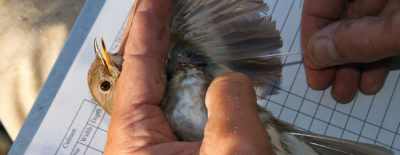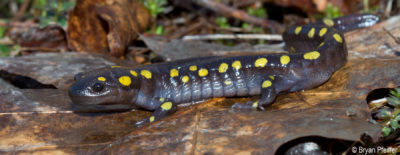Mercury is a neurotoxin that impacts the function and development of the central nervous system. Released from coal-burning power plants and other industrial sources and carried around the globe, conventional thinking held that the mercury threat was limited to aquatic environments, since it is most readily converted to its toxic form there. But our scientists have led groundbreaking research showing elevated levels in terrestrial wildlife too.

Mercury in the Mountains
Conventional thinking held that the mercury threat was limited to aquatic environments since it is most readily converted to its toxic form (methylmercury) in wetlands. VCE has led groundbreaking research that has revealed elevated mercury levels, not only in birds, but throughout the food web. Learn more »
Mercury in Vernal Pools
Working with collaborators at Dartmouth College, VCE is examining the effects of landscape characteristics on mercury accumulation in vernal pools, and assessing its bioavailability to breeding amphibians and the terrestrial foodweb. Learn more »

